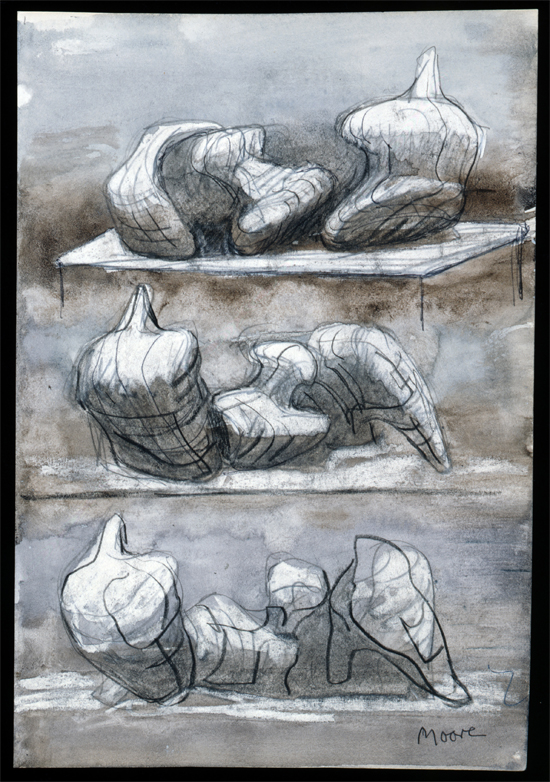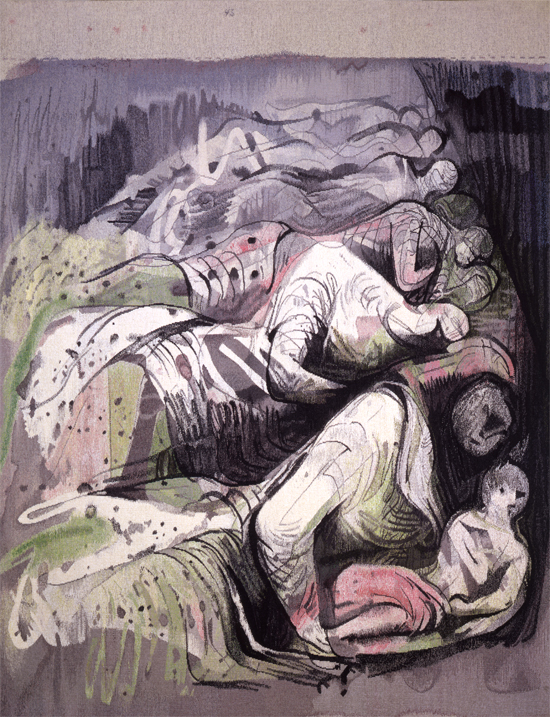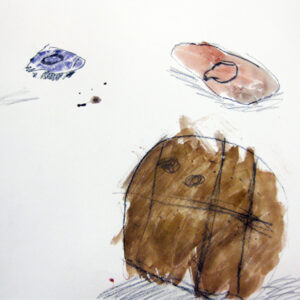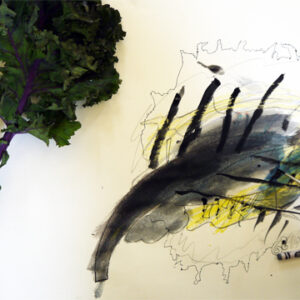Henry Moore’s Shelter Drawings
This resource shares how schools might use Henry Moore’ Shelter Drawings to inspire creativity in the classroom. See this resource as part of a pathway for use in schools here.
The Shelter Drawings can be used to:
- Develop visual literacy skills
- Explore watercolour, ink and wax resist
- Explore how to convey form in drawings by using contour lines
- Explore Chiaroscuro (light / dark) to convey mood
- Explore perspective to build sense of claustrophobia / confinement
- Explore themes of shelter, confinement, safety, being trapped
Context & Background

Henry Moore was a sculptor and draughtsman.
When introducing his drawings to children, it’s important to remember the fact that he was a sculptor – his drawings have a characteristic “sculptural” feel. Understanding this will help children explore how they convey form in their own drawings. Moore’s sculptures were monumental, inhabiting the landscape, but his studio was full of small maquettes (models) inspired by fist sized pieces of flint and bone. Even his drawings of these small objects feel “sculptural” and solid.

The Shelter Drawings

Some records say Moore made his shelter drawings after taking shelter one night in 1940 in Belsize underground station, when Moore was fascinated by the families camping out underground. Other records say Moore took many underground journeys and saw the figures in the platforms as the trains passed by.
Returning to his studio, the Shelter Drawings were often made from his memory of the experience. The images capture feelings of confinement and claustrophobia; the figures are anonymous but relationships between figures are clear. The figures in the underground, often seated or reclining, also reminded Moore of his sculptures.
See the clip above at 10 minutes 30 seconds for images of Moore making his Shelter Drawings
See this resource as part of a pathway for use in schools here.


